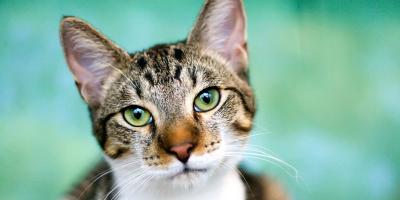
All About Kitten Teething

Kittens don’t have visible teeth when they’re born — just like baby humans. Their milk teeth emerge a few weeks after birth, and their adult teeth arrive on the scene a few months later. Some kittens are unfazed by teething, while others feel miserable; most mini felines fall somewhere in the middle of the kitten teething scale.
We’ll begin this post with a brief cat tooth synopsis, continue with a list of teething symptoms and then talk about safety tips for teething kittens. After that, we'll explore kitten-friendly teething remedies, and then we'll share a few nutrition tips for tiny cats.
What Type of Teeth Do Cats Have?
Kittens have 26 teeth, while adult cats have 30 teeth. Both kittens and adult cats have four types of teeth:
- Incisors: These tiny teeth sit at the front of the mouth. You’ll find six incisors in your cat’s upper jaw, and six in her lower jaw.
- Canines: These long, pointy teeth live next to the incisors. Cats have two canine teeth in the upper jaw, and two in the lower jaw.
- Premolars: These slightly bigger teeth are sandwiched between your cat’s canines and her molars. There are six premolars in the upper jaw and four in the lower jaw.
- Molars: These are the large teeth at the very back of your cat’s mouth. She has two molars in her upper jaw and two in her lower jaw.
When Do Kittens Get Teeth?
Generally speaking, milk teeth begin to emerge when kittens are about two or three weeks old. If you see tiny kittens chewing, they’re probably teething. By the time they’re six weeks old, most kittens have grown all their baby teeth. Some kittens take a little longer to acquire all their gnashers — but if your kitten still doesn’t have all her teeth at 9 or 10 weeks, give your vet a call.
Adult cat teeth emerge when kittens are between three and nine months old; the majority of teething occurs at about the six-month mark. If you find tiny teeth on the floor, don’t worry — this is a perfectly normal stage.
What Are the Signs of Kitten Teething?
Kitten teething signs are similar to baby human teething signs. Your kitten might:
- Eat less: If your tiny fuzzball isn’t wolfing down her kitten food, she might be teething. Teething kittens tend to chew more slowly because their gums hurt at dinnertime. If your kitten also loses weight, pay your vet a visit.
- Develop bad breath: Many kittens experience mild gingivitis as their adult teeth come in. Gingivitis can cause bad breath and gum inflammation, but if it’s caused by teething, it’ll usually resolve on its own.
- Chew everything: If your kitten’s chewing cords, chairs, her bed, your ankle and everything in between, she’s probably teething.
Other kitten teething signs include pawing at the mouth, drooling and bleeding gums. If your kitten isn’t coping with her teething discomfort, take her to the vet for a checkup.
Safety Tips for Teething Kittens
Kittens chew — and notoriously so when they’re teething — but not everything is safe to munch. Here’s how to keep your kitten safe while her grown-up chompers come in:
Remove Dangerous Things
Cover or hide electric cables, take away toxic plants like lilies or tulips and store splinter-prone wooden furniture in another room.
Play Carefully
When you play with your teething kitten, don’t pull on toys that she has in her mouth, or you might accidentally hurt her.
Lose the Toothbrush
Avoid brushing your kitten’s teeth until she’s done teething — you don’t want your kitten to associate tooth brushing with pain.
Monitor Teething Progress
Occasionally, adult teeth emerge in the wrong places. If you’re worried that your kitten’s teeth are too crowded or that they’re not coming in quickly enough, make an appointment with your vet.
Kitten-Friendly Teething Remedies
Wondering how to help a teething kitten? One of the best remedies is reassurance. Extra affection can make your kitten feel better and help her deal with discomfort. Many kittens also love chew toys made of soft plastic or rubber — you can find those in most pet shops. Kitten teething toys like these are ideal because they don’t damage your kitten’s teeth.
If your kitty pal seems extra sad or in unusual pain, take her to the vet: Something more might be going on, and it’s better to be safe than sorry.
Balanced Nutrition for a Teething Kitten
Kittens sometimes find it hard to eat while they’re teething. If you suspect that your little cat finds chewing uncomfortable, try feeding a wet kitten food until she feels better. Alternatively, soften her usual kibble with a little water.
To help your kitten thrive, make sure she eats the right food while she’s teething — and beyond. Nutrient-rich kitten food by Purina helps support growth and development, and it contains a balanced mineral blend to promote healthy teeth.
Teething in a Nutshell
Teething: it’s a rite of passage for humans and kittens alike, but it can be pretty uncomfortable. Kitten teething signs include drooling, chewing, sore gums and bad breath. You can help your teething kitten by substituting wet food, adding water to her dry food, playing gently, removing dangerous objects and providing TLC. With a little extra love and attention, she’ll soon feel better.
Related articles


